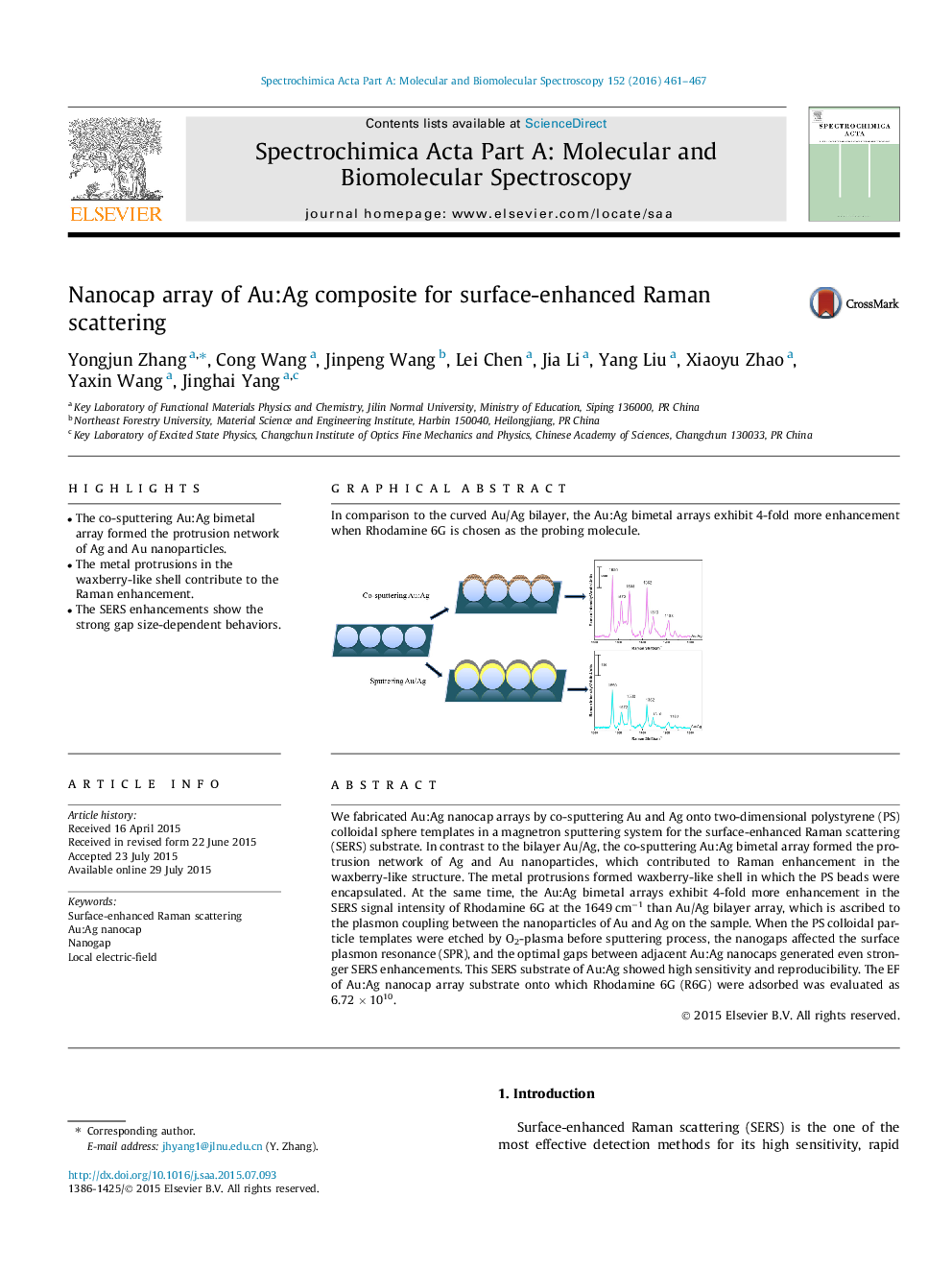| Article ID | Journal | Published Year | Pages | File Type |
|---|---|---|---|---|
| 1229796 | Spectrochimica Acta Part A: Molecular and Biomolecular Spectroscopy | 2016 | 7 Pages |
•The co-sputtering Au:Ag bimetal array formed the protrusion network of Ag and Au nanoparticles.•The metal protrusions in the waxberry-like shell contribute to the Raman enhancement.•The SERS enhancements show the strong gap size-dependent behaviors.
We fabricated Au:Ag nanocap arrays by co-sputtering Au and Ag onto two-dimensional polystyrene (PS) colloidal sphere templates in a magnetron sputtering system for the surface-enhanced Raman scattering (SERS) substrate. In contrast to the bilayer Au/Ag, the co-sputtering Au:Ag bimetal array formed the protrusion network of Ag and Au nanoparticles, which contributed to Raman enhancement in the waxberry-like structure. The metal protrusions formed waxberry-like shell in which the PS beads were encapsulated. At the same time, the Au:Ag bimetal arrays exhibit 4-fold more enhancement in the SERS signal intensity of Rhodamine 6G at the 1649 cm−1 than Au/Ag bilayer array, which is ascribed to the plasmon coupling between the nanoparticles of Au and Ag on the sample. When the PS colloidal particle templates were etched by O2-plasma before sputtering process, the nanogaps affected the surface plasmon resonance (SPR), and the optimal gaps between adjacent Au:Ag nanocaps generated even stronger SERS enhancements. This SERS substrate of Au:Ag showed high sensitivity and reproducibility. The EF of Au:Ag nanocap array substrate onto which Rhodamine 6G (R6G) were adsorbed was evaluated as 6.72 × 1010.
Graphical abstractIn comparison to the curved Au/Ag bilayer, the Au:Ag bimetal arrays exhibit 4-fold more enhancement when Rhodamine 6G is chosen as the probing molecule.Figure optionsDownload full-size imageDownload as PowerPoint slide
